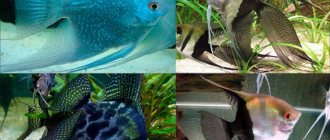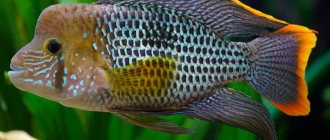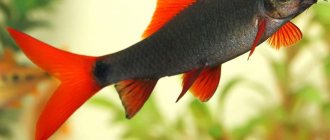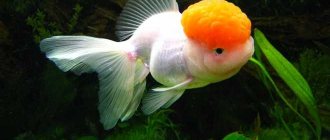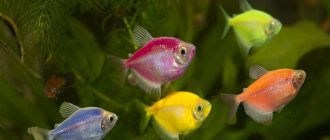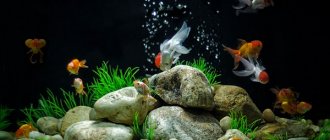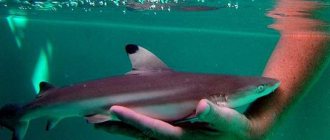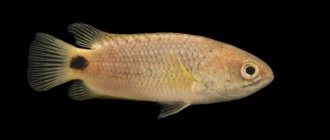Some animals have long been credited with a magical influence on humans. The arowana has become one of the “magic” fish for the whole world. She is believed to bring wealth and good fortune to those who care for her. This is a large predator that grows at least half a meter in length and is demanding in terms of living conditions. But those who want to acquire a “source of well-being” at home are ready to overcome any difficulties and learn how to care for the arowana.
Habitat in nature
This unusual representative of freshwater bodies of water is called dragon fish. Externally, the arowana has remained virtually unchanged since the Jurassic period. In those days, she lived almost everywhere in tropical climates. Now it can also be found on all continents: Southeast Asia, America, Africa, Australia. However, this fish is rare and is on the verge of extinction.
Arowana loves slow-moving rivers, lakes and swamps. There is enough food, warm water and not many neighbors. Dragon fish like to spend time near the surface and hunt for insects, small birds and amphibians. She can jump out of the water to a height of 3 m, hunting for prey.
External characteristics
Arowanas are very specific creatures, as befits representatives of ancient fauna. They bear little resemblance to most modern fish we are familiar with. They have a long dense body, a wide back, rounded sides and a narrow belly. The fins extend along the body above and below. Their shape and length determine which morph (breed) an individual belongs to. The tail can be formed by the fusion of the upper and lower fins, or it can be independent (in this case it is small). Toward the tail, the body of the fish seems to narrow and disappear.
Dragon fish always have very large, hard scales, and huge, round, bulging eyes, with which the arowana looks up or at the bottom. Another characteristic feature is its huge toothy mouth. The upper jaw is motionless, and the lower jaw opens very wide and firmly grasps the prey.
Despite the external “rigidity”, the arowana has strength, flexibility and speed.
Types of arowana
There is only one species - arowana (osteoglossum). It has many morphs or “breeds” (about 200), this division is associated with different living conditions:
Asian Arowana
Rare endangered species that can be found in Southeast Asia. The dorsal fin is short and located near the tail, and the anal fin is 2-3 times longer than it. The caudal fin is small. There are “Asians” of different colors: purple, blue, green, gold.
- red arowana - the whole body of the fish is red with a barely noticeable silvery tint. It lives in Cambodia and Vietnam and is on the verge of extinction, so all individuals are microchipped. Fish grow up to 60 cm in an aquarium, and more than 1 m in nature;
- golden arowana - has a rich golden color, especially adult individuals. They are found in Western Malaysia, but are extremely rare. Similar in size to the red arowana. Almost never found on sale;
- black arowana - each scale is painted gray-black with a gold or white border, which is why there is a contrasting pattern on the body of the fish;
- Platinum Arowana is the most expensive aquarium fish in the world. In captivity it grows up to 40-50 cm, has an even silver-yellow body color without a single spot;
African arowana
In nature, this fish grows up to 1 m, in an aquarium a little less. The arowana differs from the rest in the shape of its body: it is more rounded, the back is not so straight, the muzzle is more evenly pointed. The dorsal and anal fins are equal in size and occupy one third of the body length.
Australian Arowana
Slightly smaller than other representatives. Several morphs - red-spotted barramunda, spotted barramunda. The scales form seven even rows, each scale has a pink edge. The fins have a pearly pink pattern, and the body itself is colored white and pink. It has a large caudal fin compared to its relatives.
South American Arowana
This fish is also called the silver arowana. The most popular among aquarists. In nature, it is occasionally found in rivers adjacent to the Amazon in South America. Natural specimens reach 1.5 meters in length, aquarium specimens do not grow so large - up to 40 cm. The color is silver-gray, the scales shine in the light source.
Area and description
Arowana lives in the rivers of Burma, Northern Vietnam and Southern China, and is also found in South America and Australia. Depending on the habitat, it is divided into several varieties.
Prefers stagnant water, away from the main river channel. Omnivore, feeds on everything that fits in its mouth: small fish, frogs, water insects. It has high jumping ability, used for hunting beetles, dragonflies and small birds.
The growth of arowana fish depends on the volume of the aquarium, where their size varies from 40 to 80 cm. In nature, individual individuals grow up to 1.2 meters. When properly kept at home, the fish's life cycle is up to 35 years.
All species of arowanas have the same body structure and scales. The fish standards are as follows:
- The body is long, flexible, streamlined.
- The head is proportional, the muzzle is raised upward, the lower part can swell and take the shape of a bag.
The length of the silver arowana is limited by the size of the aquarium
- The eyes are large, round, moderately convex with a black pupil.
- The scales are large, hard, tightly fitting to the body like a shell.
- The fins are powerful, dense, colored to match the color of the body.
- The color is different for each species. When kept at home, pearl, black, silver, green, and platinum shades are found.
How to keep an arowana
From the description of the dimensions it is clear that the main condition for keeping it is a spacious aquarium. Arowana will not be able to live in a small volume; she will die before reaching adulthood and without gaining beauty. The life expectancy of an arowana in good conditions is 8-9 years. How long do arowanas live in unsuitable conditions – from one to two years? This fish grows very quickly and becomes crowded. But creating the right aquarium today is not such a difficult matter, and you can try to make the fish that bring prosperity comfortable.
Arrangement of the aquarium
- The volume of the aquarium is at least 250 liters, ideally from 500 liters. The arowana feels completely at ease in a volume of 800 liters or more: there it will definitely acquire all the beauty of color and harmony of body structure. There must be room not only for swimming, but also for turning around for this flexible large fish;
- soil - any soil suitable for the design of the biotope;
- The filter must be external, since fish are sensitive to the content of nitrates and nitrites in the water. No internal filter is capable of purifying 200 liters of water;
- aeration – required in the form of a separate compressor;
- plants should not take up floating space. Living ones must have a strong root system so that fish cannot dig them up out of boredom or bad mood;
- decor - large stones, driftwood;
- lighting – moderate, daily, with smooth switching on. It is important to ensure that the lamp does not heat the surface of the water;
- Be sure to have a tight-fitting heavy lid.
Water parameters
- temperature 24-26°C for silver arowana, 25-28°C for others;
- hardness 2-23°;
- acidity 5.5-7.2 pH;
Maintenance and care
- weekly change of a quarter of the volume of water;
- deep cleaning of the soil 1-2 times a month.
Recommendations when buying fish for the first time
- Dimensions and shape of the aquarium . You need to decide what size aquarium you can place at home. Also, when choosing a place, you need to take into account the needs of future pets: water temperature, lighting and other nuances. In the pet store, the fish are often still babies who will grow up, and perhaps they will be cramped.
- Fish sizes . The law of nature - the strong eats the weak - also applies to the inhabitants of the water kingdom. Even if the fish is not a predator, but larger in size, it can swallow babies. Smaller fish will always hide and get scared, sometimes refuse food when a much larger fish is nearby.
- Character and habits of fish . You need to find out in advance what your pet's temperament is. After all, fish have their own kingdom, where they can sometimes jealously defend their territory, show excessive activity or aggressiveness if they are predators. When choosing different species, you should make sure that they get along well with each other.
- Relationship within a species . Several males of the same species can get along well, without any conflicts, while others, on the contrary, will not be able to calm down until they survive their competitor. This applies to fighting fish, as well as some species of cichlids. Some breeds live exclusively in a pack, but alone they can simply die.
- How to feed properly . Find out what the fish you like prefers to eat. Some people like to eat dry food, while carnivores only serve meat or even live food. You need to decide whether you will have the opportunity to constantly buy worms, live bloodworms, larvae and other living creatures. And this “food” will need to be stored in the refrigerator, next to your food.
- Correct conditions for keeping . Each fish, including Arowana, requires an individual approach, so these nuances need to be clarified in advance. There are species that are really difficult to maintain, both in terms of time and finances. This species includes Discus. And many people know Guppies, they are not picky at all and do not require special care. Separate requirements for water, because different breeds of fish live in different water: temperature, hardness, salinity. Selected pets can eat the same food and get along well together, but one requires warm water, and the other cooler. As a result, it turns out that the species are not compatible after all.
- How and where to buy Arowana . Carefully choose the place where you want to purchase Arowana. If this is a pet store, pay attention to the conditions in the premises, how the staff cares for the fish, and evaluate the reputation of the establishment. This will allow you to create an overall impression of the seller and decide whether something is worth buying from this place.
What to feed the arowana
Dry food is absolutely not suitable for dragon fish. Feeding the arowana can only consist of live food, however, the list is varied:
- insects (chafer bugs, centipedes, grasshoppers, crickets. The latter can be bred at home specifically for feeding your pet);
- small fish that are released into the aquarium alive and watched as they hunt;
- frogs and mice - suitable for large individuals as a treat;
- fillets of sea fish, shrimp, crabs - this is the most convenient food, since it can be frozen and given to the fish daily;
- cubes of beef heart without fat.
The animal should not be overfed, so as not to provoke health problems. Once a week there is a fasting day.
Behavior and Compatibility
Arowana is a fish that demonstrates obvious intraspecific aggression in the aquarium. Due to the cramped conditions and the inability to have privacy, a stronger individual will quickly deal with the others. Therefore, there is one arowana per aquarium.
As for the neighborhood, only large predators (astronotus, Indian knives, severums, etc.) can be suitable here. It is desirable that the neighbors' habitat be in the middle or lower layers of water. This way the fish are less likely to be eaten or simply killed. You need to organize shelters for your neighbors.
Three features of the content can be distinguished:
- Arowana remembers its owner, loves him, and rejoices when he sees him. She will never bite him, she may even allow herself to be stroked;
- treats strangers with distrust. There have been cases when, while trying to touch a fish, a person was bitten. Arowana teeth marks are quite deep and take a long time to heal;
- When caring for an aquarium, it is important to ensure that the fish does not jump out of the water. You need to clean the tank slowly, without sudden movements, so as not to scare your pet.
Features of care
Keeping an arowana in an aquarium is quite normal. The capacity may be low, but the volume for an adult requires 1 thousand liters or more, the recommended length is at least one and a half meters. The fish should turn around and move freely.
To ensure clean water, a powerful external filter is suitable. Optimal parameters:
- temperature - 22-25 degrees above zero;
- hardness - ranging from 5 to 10;
- pH - neutral.
An arowana requires an aquarium with a capacity of more than 1000 liters
Weekly water changes are required - 20% of the aquarium volume. Plants are selected with strong roots and planted near the back wall or in pots. Coarse river sand or pebbles are suitable as soil. The lighting is dim, preferably with a dimming function.
The arowana is not suitable for keeping in a community aquarium; it will eat everything that fits in its mouth. It is advisable to keep one individual; the fish have highly developed intraspecific aggression, but they coexist peacefully with such large fish as astronotus, Indian knife, giant gourami, black pacu, and arowana. It is almost impossible to distinguish the fish by gender - they look exactly the same, but the males are more graceful than the females, with a longer anal fin.
Proper nutrition
Feeding an arowana can significantly undermine the family budget; the fish requires a lot of food. It is recommended to feed small aquarium fish, crickets, and centipedes as live food. Experienced aquarists recommend gradually switching your pet to special frozen and dry food. You can also feed raw sprat after defrosting it. Pisces are prone to obesity, so the owner should properly organize their diet and do fasting days once or twice a week.
Difficulties of content
Domestic arowanas are quite shy. They are afraid of sudden movements, flashes of light, and even a cat that is interested in them. They can jump out of the aquarium out of fear and even break it if the glass is too thin. It is recommended to cover the aquarium with an opaque lid, since huge fish can be afraid even of the owner’s shadow.
Arowanas are very gluttonous, so it is necessary to arrange fasting days for them.
Scientists have found that arowanas have a certain intelligence. They recognize the owner, can calmly take food from their hands and let themselves be petted. But large crowds of people near the aquarium are not welcome, so it is strictly not recommended to hold noisy parties in the room where the pet lives.
Breeding
Breeding arowanas is not possible in a home aquarium. This is difficult even on fish farms in attempts to maintain the population and establish sales.
Arowana breeding process
Spawning usually occurs in winter. The female lays very few eggs (the size of each egg is 1-1.5 cm), and then the male takes on all the troubles of raising the young: he carries the eggs and larvae in his mouth, and later provides them with shelter there at the slightest danger. To force arowana to spawn, you need to create conditions that are completely identical to natural ones.
Arowana diseases
In general, these fish have strong immunity. But if the aquarium is extensively damaged by fungal or bacterial infections, the arowana will also become infected. Signs are standard for all aquarium fish: spots, plaque, cloudiness of scales.
If the filter fails to clean the water, the fish's gills may roll up. If the pH level is too high, the arowana loses its vision and its eyes become cloudy.
Prevention of diseases - timely proper care of the aquarium and monitoring water parameters.
Aquarium fish: how to make the right choice
People who decide to have aquarium fish are faced with a rather difficult question - what kind of pet to choose. If you search well, you will find that you will have to choose from almost 2,000 species of a wide variety of freshwater fish. On this page we tried to collect all the necessary information about the aquarium fish - Arowana. If you have never had an aquarium before, you don’t need to choose based on the principle of a beautiful fish and an ugly fish. It is necessary to take into account a lot of variables: what kind of food it prefers, the temperature and composition of the water, whether it is a predator or not, whether it is dangerous for humans, whether it gets along with other species, and many other interesting things. If we classify conditionally, we can distinguish two large groups of fish:
- Easy-to-care fish, not at all demanding of environmental conditions, can survive even in unfavorable situations. They have high endurance by nature, because they live in places where water constantly changes its characteristics or even disappears for a while. However, for health and beautiful appearance, such fish need to be provided with conditions as similar as possible to their natural habitat.
- Difficult to care for fish, most of them belong to tropical latitudes. For them, you need to create special conditions in the aquarium, again as similar as possible to the area where they live in nature. These species rarely breed in captivity, so they are brought from the wild.
For a novice fish breeder, it is better to choose one of the most unpretentious species. In addition to the prospect of not being able to cope with caring for a “capricious” fish, there is a danger of introducing an exotic disease that can harm the rest of the flora and fauna of the aquarium. If you liked Arowana, carefully read the characteristics, character, feeding, care and breeding of these fish.
